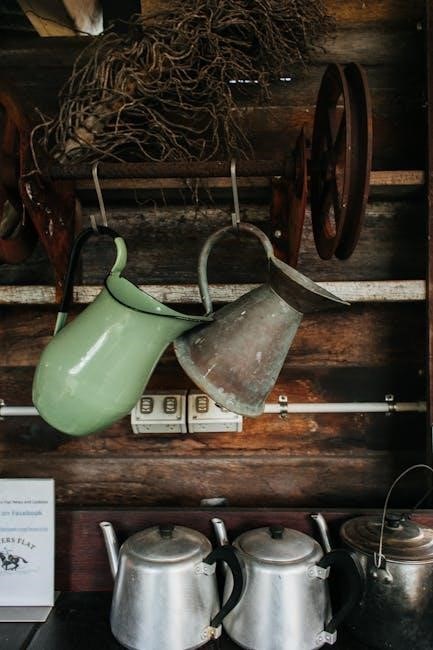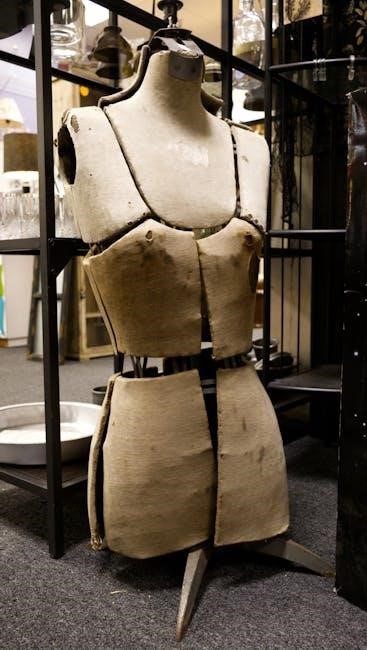Valve guides experience wear due to constant friction between guide and stem, affecting engine performance, causing issues with oil leakage and combustion, requiring regular checks and maintenance to prevent further damage and expensive repairs later.

Causes of Wear on Valve Guides
The constant friction between the valve guide and stem is a primary cause of wear on valve guides, leading to increased clearance and reduced engine performance. This friction is exacerbated by the lack of lubrication in positive valve seals on late model engines, causing the guides to wear down more quickly. Additionally, side forces on the valve stem can also contribute to wear on the valve guides, as these forces can cause the stem to vibrate and move slightly, leading to increased friction and wear. The age of the vehicle and engine can also play a role in the wear of valve guides, as older engines may have more worn guides due to years of use. Other factors, such as driving conditions and maintenance habits, can also impact the wear of valve guides. Regular checks and maintenance can help to identify and address worn valve guides before they cause more serious problems. The type of valve guide material used can also affect the rate of wear, with some materials being more durable than others. Overall, the causes of wear on valve guides are complex and multifaceted, requiring careful consideration and attention to prevent and address wear.

Importance of Checking Valve Guides
Regularly checking valve guides is crucial for preventing damage and ensuring optimal engine performance, as worn guides can lead to costly repairs if left unchecked, affecting overall engine efficiency and longevity slowly.
Consequential Damage to Valves
Worn valve guides can cause consequential damage to valves, resulting in expensive repairs and potential engine failure. The constant friction between the guide and stem can lead to valve stem wear, causing the valve to leak or stick, and potentially leading to engine damage. As the valve guides wear, the valves may not seat properly, allowing oil to seep into the combustion chamber and causing the engine to burn oil. This can lead to a range of problems, including decreased engine performance, increased emissions, and potentially even engine failure. The damage can be exacerbated by the lack of lubrication to the valve guides, particularly in late model engines with positive valve seals. Regular inspection and maintenance of valve guides is essential to prevent consequential damage to valves and ensure optimal engine performance. By checking the valve guides and replacing them as needed, engine damage can be prevented, and the overall longevity of the engine can be improved. Valve guide wear can be a significant problem, but it can be addressed with proper maintenance and repair.

Methods for Repairing and Replacing Guides
Technicians use various methods, including knurling and installing liners, to repair and replace worn valve guides, ensuring proper valve function and preventing engine damage, with specialized tools and expertise required for the process always.
Techniques for Repair and Replacement
Several techniques are used to repair and replace worn valve guides, including knurling, which involves cutting a spiral groove into the guide to increase its diameter and improve the fit of the valve stem. Another technique is installing thin-wall bronze guide liners, which provide a new, smooth surface for the valve stem to ride on. This method is often preferred because it is less expensive and time-consuming than replacing the entire guide. Additionally, some technicians use a process called guide reaming, which involves using a specialized tool to enlarge the guide and then installing a new guide liner. Other techniques include replacing insert guides, modifying the valve guide to accept oversize valve stems, and replacing integral guides with false guides. These methods require specialized tools and expertise, and are typically performed by experienced mechanics or engine rebuilders. The choice of technique depends on the severity of the wear, the type of engine, and the desired level of repair. By using the correct technique, technicians can restore the valve guides to like-new condition, ensuring proper valve function and preventing engine damage. Proper repair and replacement techniques are essential to maintain engine performance and longevity.

Symptoms of Bad Valve Guide Seals
Oil leakage into cylinders, excessive oil consumption, and blue smoke from exhaust, indicating worn valve guides and seals, requiring immediate attention to prevent engine damage and costly repairs, affecting engine performance and longevity gradually.
Common Symptoms and Engine Damage
Worn valve guides can cause a range of symptoms, including oil leakage into the cylinders, excessive oil consumption, and blue smoke from the exhaust. These symptoms can lead to engine damage, including damaged piston rings, cylinder walls, and valves. The engine may also experience a loss of power, rough idling, and decreased fuel efficiency. In addition, worn valve guides can cause the engine to overheat, leading to further damage to the engine and its components. It is essential to address the issue of worn valve guides promptly to prevent costly repairs and engine failure; Regular maintenance, including checking the valve guides and replacing them if necessary, can help to prevent these problems. By being aware of the common symptoms of worn valve guides, drivers can take steps to protect their engine and prevent damage; This can help to extend the life of the engine and prevent the need for expensive repairs. Furthermore, addressing worn valve guides can also help to improve the overall performance and efficiency of the engine.





